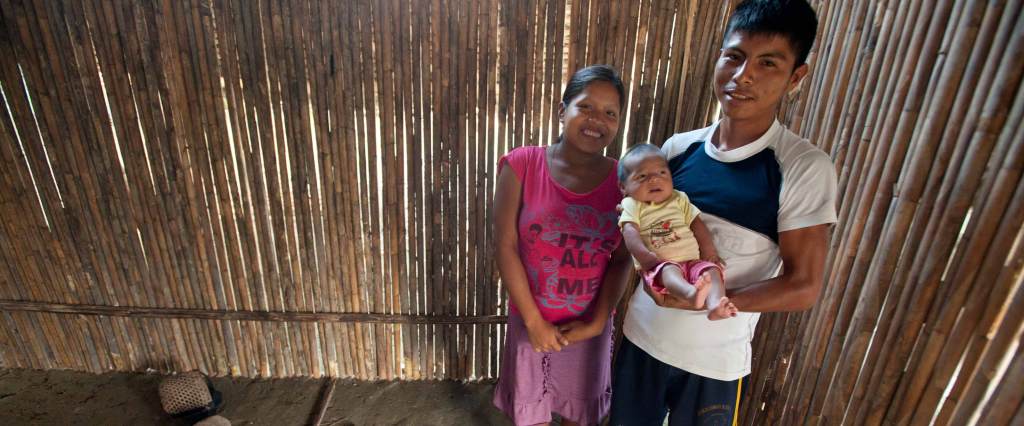 Sergio Urday
Sergio Urday1.2 billion.
That’s the number of people globally who live in extreme poverty, defined internationally as living on less than $1.25 a day. That’s one of every five people on the planet, lacking enough food to meet their basic physical and mental needs, and struggling to achieve human dignity.
Despite significant progress in recent decades, improving the lives of the world’s poorest remains a constant challenge for governments and development organizations alike. We know that it is not enough to focus on economic growth, for two reasons: It rarely benefits the very poor; and extreme poverty is more than simply lacking income.
A host of social, cultural, and political factors keep individuals trapped in a vicious cycle of poverty, and no one solution can solve all the problems poor communities face. Building a school in a rural village, for example, doesn’t magically bring needed healthcare. Providing cash payments to poor mothers to promote the education and health care of their children—the conditional cash transfer programs prevalent in many developing countries—does not improve the livelihoods of the mother.
Like so much development work, eradicating extreme poverty requires a multi-faceted approach to change the structural forces that leave so many poor. It starts with understanding the forces that trap the extreme poor in poverty and designing interventions to address these forces. What does this model look like in practice? Is it sustainable? And can it be effective across settings?
A study published in Science Magazine last week offers some of the strongest evidence yet to answer all three of those questions. Co-authored by nine leading development economists, the study discusses the impacts of an integrated approach to improve livelihoods among the world’s very poor supported by the Ford Foundation and CGAP (the Consultative Group to Assist the Poor), a global partnership of 34 leading organizations that seek to advance financial inclusion.
In six countries—Ethiopia, Ghana, Honduras, India, Pakistan, and Peru—researchers tracked more than 21,000 people using the “graduation” approach, a development model that combines the transfer of a productive asset, such as livestock, with a cash stipend, training, coaching visits, savings accounts, and health education.
The idea behind the approach is straightforward: While each of these interventions alone may not prove universally effective as an anti-poverty tool, taken together they address several factors that perpetuate poverty at once. A multi-pronged program could yield significant improvements across dimensions of health and well-being. It could, in theory, unlock the poverty trap.
The results of the study were nothing short of groundbreaking. For each of the ten key outcomes—from food security to income and assets, mental health to women’s decision-making—the approach significantly improved participants’ lives. In addition, the program:
- Was sustainable. Three years after the productive asset transfer, 8 out of 10 indices still showed significant gains, with very little or no decline on the key variables (consumption, household assets, and food security).
- Worked across contexts. Incomes and revenue were significantly higher in each of the six countries, and household consumption was significantly higher in every country but one. This diversity—spanning three continents, multiple cultures and religions, and variations in market access and government programs—gives a high level of confidence in the program’s reliability.
- Was cost-effective. Five of six countries saw a positive return on investment, ranging from 133 percent in Ghana to 433 percent in India. In other words, for every dollar spent on the program in India, ultra-poor households saw $4.33 in long-term benefits.
As Esther Duflo, MIT professor, director of the Abdul Latif Jameel Poverty Action Lab (J-PAL), and co-author of the study, rightly put it, “Policymakers seeking a program to sustainably improve the lives of the very poor should consider investing in this approach.” Indeed, they already are: the government of Ethiopia plans to expand the program to three million additional people, and adaptations of the model already are being scaled up in Peru and Colombia. Furthermore, the foundation is supporting adoption of the model by other governments in Central and Latin America.
Equally important, the study presents a powerful argument for how governments, development organizations, and donors should think about anti-poverty measures. Through concerted, sustained, and multi-pronged programs that empower individuals and open opportunity, it is possible to significantly improve the lives of the poorest people in a number of meaningful ways.
More Information
- Read coverage of the study from Tina Rosenberg and Nicholas Kristof in The New York Times
